How to support Victorian students with science work while learning remotely
For many parents it’s been a while since they studied science, but supporting your kids with science-related work doesn’t need to be scary. Here are some tips on helping students discover and explore.
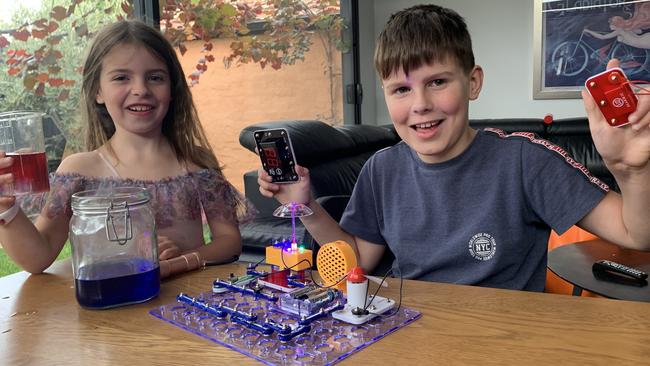
Understanding science and scientific theories can be complex. For some parents, the thought of having to observe things, classify things, predict things, interpret things, mix things in a lab or form conclusions is downright scary. It may be decades since they’ve studied biology, physics or chemistry themselves and their memories are hazy at best.
However, science is all around us – from our own bodies to the flat-screen TV we watch at night and how trees help us breathe – and we experience it every day. So how scary can it be?
Parents shouldn’t be afraid to support their child’s learning. In fact, parents should stop to consider how much science they DO know as opposed to how much they DON’T know and they would be pleasantly surprised.
HOW TO HELP STUDENTS WITH MATHS WORK
A parent’s best tool in helping their child study science is encouragement. Reassuring the child that it’s okay if they don’t get the answers right first time, if they don’t understand the theory yet, if the experiment doesn’t work. And remind children to check in with their teachers if they have any difficulties, concerns or issues about what they are learning.
Studying science is important for teaching children how to think, learn, solve problems and make informed decisions. These skills are vital to every aspect of a student’s education and future life and career.
Today the Kids News’s Learning At Home program has partnered with Evidence For Learning to analyse a science topic in four age categories to assist parents in understanding what their children may be learning.
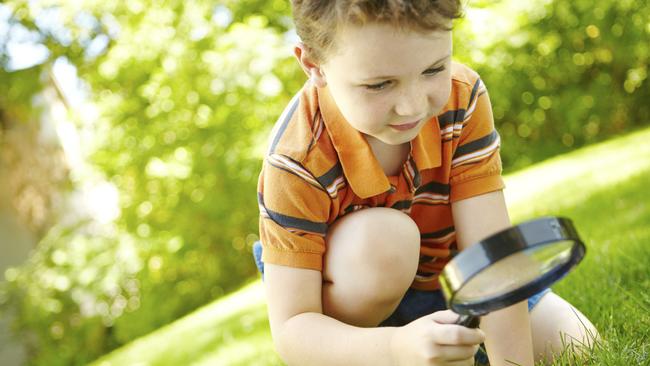
SCIENCE TIPS
PREP TO YEAR 2
Question and predict
What is it?
Being able to ask and answer questions about familiar scientific objects and events around them and make predictions about them.
Why does my child learn this?
It helps them to explore and understand the world around them. They use their senses to learn, they use their curious minds to help predict outcomes and they record basic data to make and compare observations.
Common mistakes
1. Not encouraging children to question why things happen or discovering what science is behind it. For eg, why plants are green or how water turns to ice.
2. Thinking children are too young to understand science. The minds of young children are perfectly primed for learning science concepts.
3. Not relating science to everyday life – for eg, thinking science questions can only be answered in a lab.
Tips for parents
1. Review any science-related concepts and activities provided by your child’s school. Use these concepts to do hands-on experiments with your children and make it a part of everyday life. Examples of this would include putting bubble bath into water or watching steam rise from a coffee cup.
Invest in some scientific equipment such as buying a magnifying glass or microscope to explore leaves and bugs up close.
2. Ask open-ended questions about these experiments, such as ‘Can you describe..?’, ‘I wonder what would happen if..?’, ‘What do you expect might happen?’
3. Use a range of methods to explain science – including encouraging children to use all their senses. What do they see? What do they hear? What can they taste? What can they feel? What can they smell?
4. Use visual tools to help explain science, including drawings and graphics.
5. Remember that science knowledge is built over time. So the more you talk about science, and explain science, and celebrate the science elements that you know, the more that knowledge will rub off on your children.
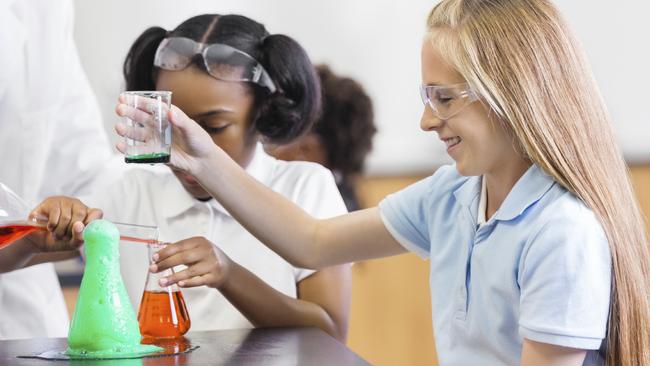
YEARS 3-4
Basic biology
What is it?
The study of living organisms, particularly plants and animals.
Why does my child learn this?
Biology connects us to the world we are living in and reminds us of our interconnectedness with all other life forms around us.
Common mistakes
1. Misconceptions between scientific terms and everyday use of terms, such as confusing ‘living things’ with where and how people ‘live’, not recognising trees as ‘plants’ because the everyday use of the word ‘plant’ refers to small, decorative plants in gardens.
2. Concentrating on one aspect of biology and not allowing children to make connections between individual examples and the big ideas. For eg, only focusing on the differences between living and non-living things rather than finding similarities between different groups of living things.
3. Not introducing biological terms to children early enough. For eg, if children hear about photosynthesis from an early age they will have a basic understanding of what it is (how green plants use the sun to make their own food) which will give them a foundation to build on in later years with more detailed explanations.
Tips for parents
1. Regularly talk to your child about biology – using and explaining basic biological terms such as living and non-living things – as this will help develop their vocabulary and reasoning skills.
2. Review any biology-related concepts and activities provided by your child’s school. Show children what you know about these concepts and take part in any activities with them.
3. Discover what biological topics your child is most interested in – the human body, plants, how dinosaurs lived – and take an interest in it yourself so you can explore it together.
4. Talk about difference and similarity in biology, for eg, the type of teeth an animal has and the effect that has on its diet. Or what sort of covering different animals’ bodies have (fur, feathers or skin) and what they can “predict” about the animal or group of animals from that.
5. Talk about how living things move, grow, feed, survive and how they might depend on each other and the environment to survive. Each living thing is fascinating once you start investigating them.
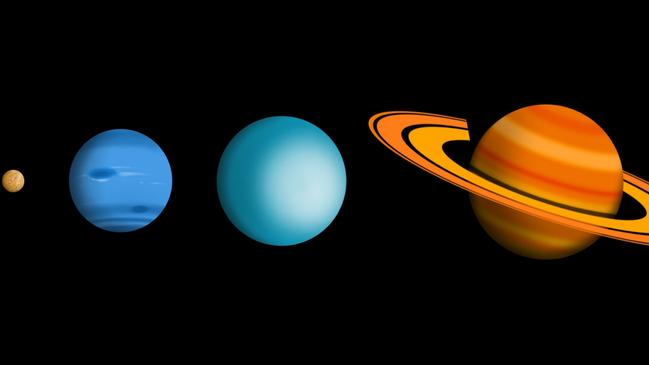
YEARS 5-6
Earth and space
What is it?
The study of Earth and its place in the solar system.
Why does my child learn this?
It helps them understand how fragile and important our home planet is. The more we learn about all planets, the better we can understand our own: its geological past, the behaviour of its atmosphere, how life if possible, and future climatic trends.
Common mistakes
1. Not realising so many common events in our daily life, such as night and day, are linked to our solar system.
2. Thinking the Earth is the centre of the solar system and everything happens around our planet.
3. Thinking other planets appear in the sky the same place all the time.
Tips for parents
1. Review any Earth and space concepts and activities provided by your child’s school. Discuss these topics with your child and encourage them to explore, challenge and expand their existing ideas. For eg, are we the only living beings? Will it be possible to travel to Mars one day? How deep is the soil? What is it like in the centre of the Earth?
2. Explore the use of models to represent Earth and space concepts, and use them to encourage your child to explain and predict. One suggestion is to make a three-dimensional model to represent which planets are which and where they are located in relation to Earth and use it to discuss what that might mean for the different and unique features of each planet.
3. Find ways to visualise the Earth’s geology and the solar system for your child. Discuss how the Earth is like an onion with a number of layers but different in that the Earth only has four layers and those layers are made of different materials. Buy a telescope to look at the stars or visit the NASA website for fascinating insights and imagery from space.
4. Talk about events such as the summer and winter equinox (the longest and shortest days of the year) and how the Earth’s rotation around the Sun and the Moon affect our calendar and time zones. Explore indigenous interpretations of the motion of the sun, Earth and moon through Australian Aboriginal astronomy websites.
5. Watch and discuss space movies. There are some fascinating movies about real space exploration plus entertaining and educational space movies for kids that will help them understand our solar system and its moons, the sun and planets.
MORE NEWS:
RISE FROM ASHES DELAYED AS BUSHFIRE SCHOOL GOES ONLINE
HOW EXCESS SCREEN TIME IS HARMING AUSSIE KIDS
PARENTS, THIS IS HOW YOU SHOULD TEACH KIDS AT HOME
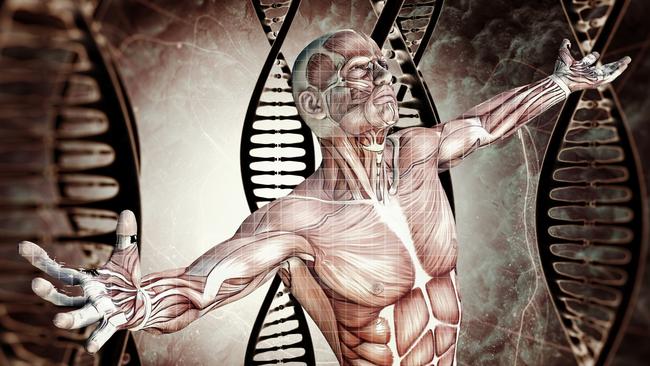
YEARS 7-12
Scientific discussion
What is it?
Regular discussion about science including the sharing of observations, interpretation of evidence, and explanation of findings. This can be done in an educational setting, but also at home to understand more common things such as momentum and kinetic energy in sport, how sticky notes work or what causes an eclipse.
Why does my child learn this?
Scientific discussion teaches children to think about the world we live in. It also teaches them how to be objective, how to reason and solve problems and how to construct evidence-based arguments. It will also help them to understand current events, including news about petroleum, product recalls, pollution, the environment and technological or medical advances.
Common mistakes
1. Not learning key information and vocabulary before exploring complex topics.
2. Using too much jargon in scientific communication. Science does have its own language, but it doesn’t have to be incomprehensible. Explain science in everyday terms if you can.
3. Not understanding the difference between data and evidence — a piece of data from a single experiment is not enough evidence to support a robust conclusion.
Tips for parents
1. Science is like learning a new language. Your child will need to be taught new scientific vocabulary and this can be challenging; however, it is familiar words used in unfamiliar contexts that cause most difficulty. Review the scientific words used in your child’s current school activities, encourage them to read scientific texts and research the meaning of scientific words. Explain to your child that lots of scientific terms have root words. Such as photo, which means light and appears in photosynthesis and photograph to name two.
2. Encourage your child to learn the first 20 elements of the Periodic Table. You can use an acronym or a song.
There are multiple ways to learn it online, just find the one that best suits your child. Knowing these elements will help them understand what many things in the world are made from.
3. Encourage your child to elaborate on the scientific work they are learning at school by prompting them to generate an explanation for an idea that they have learnt. For eg, ‘Tell me how an electric motor works?’ This helps integrate new information with existing prior knowledge, helping to embed it in the long-term memory. Encourage them to use everyday terms if they can.
4. Ask children if they understand the science behind things that happen at home. Give them time to think about the scientific issue they may be seeing or experiencing, then ask them some open-ended questions about what they are seeing, hearing, experiencing and ask them to interpret it. Encourage them to use multiple sources of data to build a strong argument, rather than just expressing their opinion. If they struggle to understand the science behind something, encourage them to look it up or discuss it with their teacher.
* Evidence for Learning is a non-profit, independent national organisation whose mission is to help educators increase learning through better research. Kidsnews.com.au, a free educational news literacy site, is partnering with Evidence for Learning to make sure the advice and suggestions given to parents to support learning at home is informed by the best available evidence.
